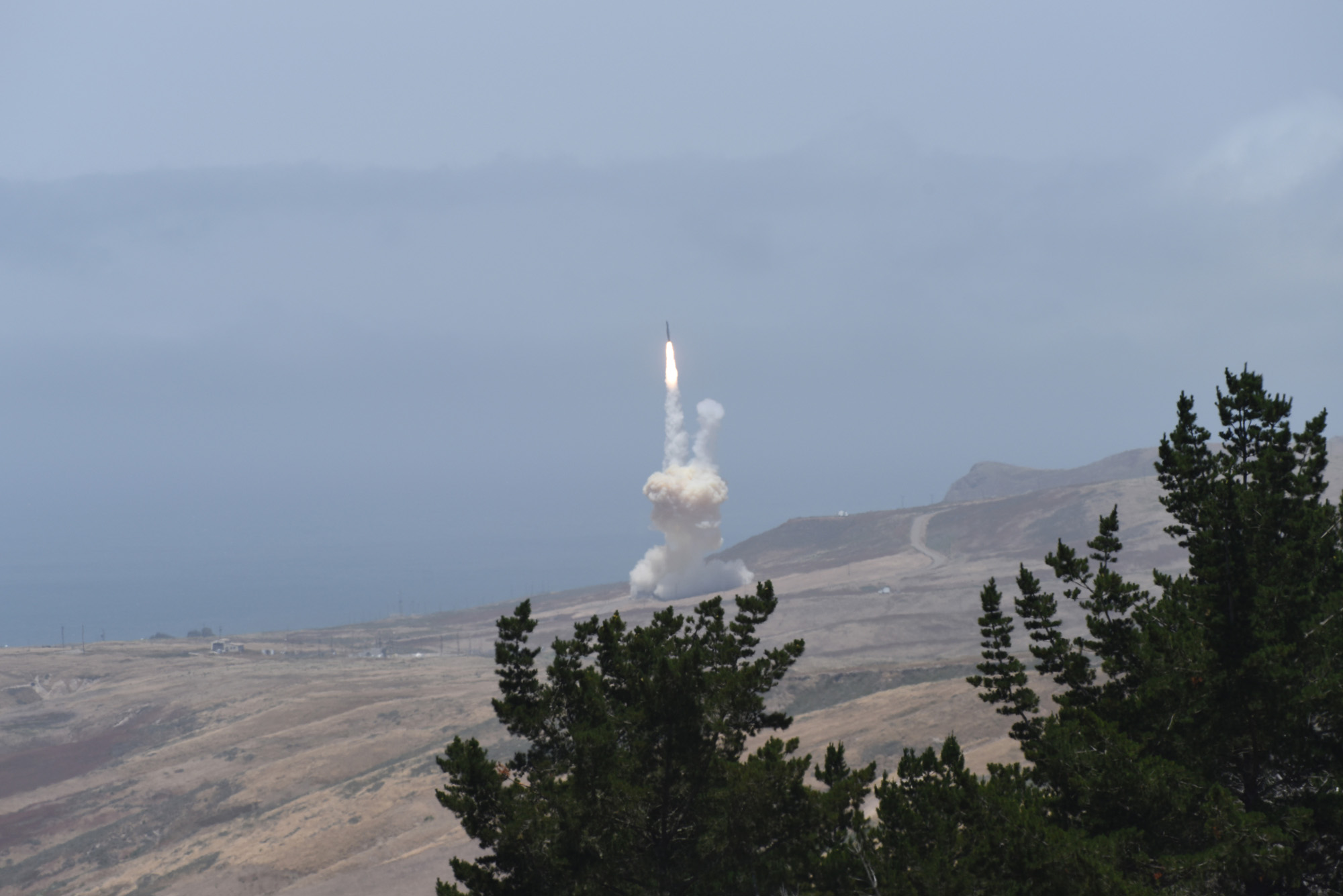US Missile Defense Successfully Shoots Down ICBM in First Live-Fire Test of Its Kind
WASHINGTON — The Missile Defense Agency's ground-based defense system successfully intercepted an intercontinental ballistic missile during the first live-fire test of its kind Tuesday (May 30), the agency said.
The Ground-based Midcourse Defense(GMD) is designed to intercept and destroy missiles during the midcourse of their trajectory through space. Tuesday's test was the first time the system had faced a live-fire ICBM-class test, MDA said in a press release.
The interceptor launched from Vandenberg Air Force Base, California, and its "exo-atmospheric kill vehicle intercepted and destroyed the target in a direct collision," the release said. [The Most Destructive Space Weapons Concepts]
"The intercept of a complex, threat-representative ICBM target is an incredible accomplishment for the GMD system and a critical milestone for this program," MDA Director Vice Adm. Jim Syring said in a statement. "This system is vitally important to the defense of our homeland, and this test demonstrates that we have a capable, credible deterrent against a very real threat."
Rep. Mike Rogers (R-Alabama), chairman of the House Armed Services strategic forces subcommittee, said the successful test will help deter U.S. adversaries.
"The dictator in North Korea surely understands that the United States will not allow itself or its allies to be subject to his threats," Rogers said. "We must do more to build on the success of today's test to truly keep Americans and their allies safe from the threat of ballistic missile attack."
The ICBM test target was launched from the Reagan Test Site on the Kwajalein Atoll in the Marshall Islands, according to MDA. The Sea-Based X-band radar in the Pacific tracked and targeted the launch, as did "multiple sensors," MDA said, which would most likely include the Air Force's main missile-warning satellite constellation, the Space-Based Infrared System.
Breaking space news, the latest updates on rocket launches, skywatching events and more!
The intercept is likely the last major test Syring will oversee before leaving MDA. Air Force Lt. Gen. Sam Greaves , former leader of the Air Force's Space and Missile Systems Center, will succeed him.
This story was provided by SpaceNews, dedicated to covering all aspects of the space industry.
Mike Gruss is a veteran defense reporter and Editor-in-Chief of Sightline Media Group, which includes Army Times, Air Force Times, Dense News, Military Times and Navy Times. From 2013 to 2016, Mike served as a Senior Staff Writer for SpaceNews covering national security space programs and military space policy in the U.S. Congress. Mike earned a bachelor's degree in English and American Studies from Miami University and has previously wrote for the Journal Gazette in Fort Wayne, Indiana and the Virginian-Pilot in Virginia before joining SpaceNews. Prior to joining Sightline in 2017, he was a senior editor of FedTech magazine covering technology in federal government. You can see Mike's latest project on Twitter.



